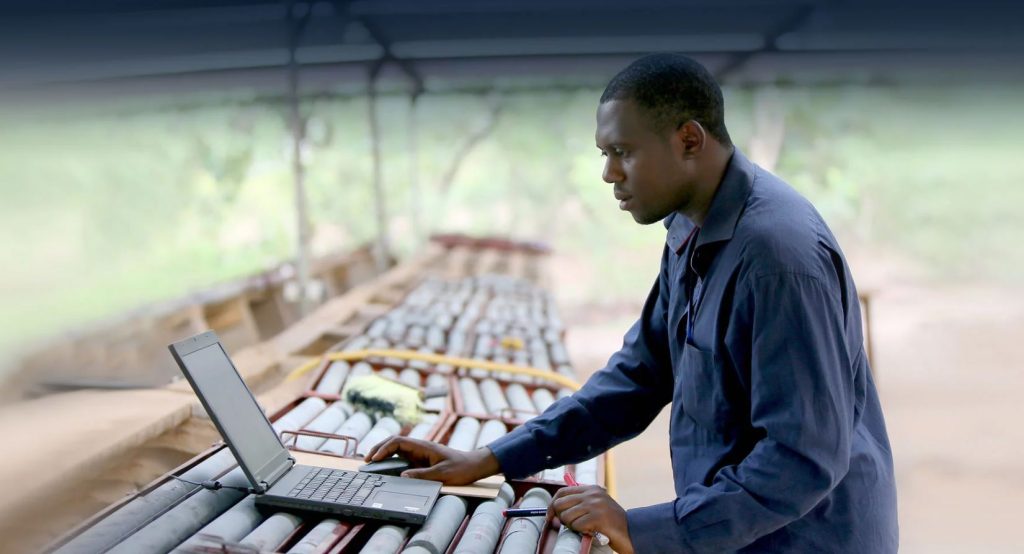Sarama Resources drills 7.05 g/t gold over 5 metres at Sanutura, Burkina Faso

Sarama Resources Ltd. [SWA-TSXV; SRR-ASX] is encouraged by several near-surface intersections of new mineralization from exploration drilling at its 100%-owned, multimillion-ounce Sanutura project in the south of the Tankoro mineralized corridor of Burkina Faso, West Africa.
The reported drilling totals 2,900 metres and was primarily focused on testing for new mineralization in lightly-drilled areas of the Kenobi, Djimbake and Obi Prospects. The results represent the sixth discovery of additional/extensional mineralisation since the commencement of the ongoing +50,000-metres drill program and continue to demonstrate the strong potential to grow the oxide component of the project’s 0.6Moz Au (Indicated) plus 2.3Moz Au (Inferred) mining shape constrained Mineral Resource.
Highlights include new, near-surface mineralization intersected in the south of the Tankoro Mineralized Corridor. Highlighted downhole intersections from new assays include 5 metres at 7.05 g/t gold (incl 1m at 25.60 g/t Au) from 9 metres in TAA173; 22m at 1.52g/t Au from 22m in TAA278; 10m at 1.33g/t Au from 23m in TAR059; 14m at 1.20g/t Au from 10m in TAA178; 6m at 1.90g/t Au from 15m in TAA171; and 6m @ 1.49g/t Au from 7m in TAA141.
Intersections of new mineralization are in shallow, oxide material with high potential to add to the oxide and transition component of the Mineral Resource, currently standing at 0.2Moz Au (Indicated) plus 0.8Moz Au (Inferred).
New mineralization is outside the existing Mineral Resource and show clear potential to expand its footprint. Further results will be released in due course. Follow-up drilling, including greenfields exploration drilling, expected to commence in 2023.
Andrew Dinning, president, CEO & MD, commented: “These most recent drill results continue to support our view that significant potential remains to make new discoveries outside the existing Mineral Resource in the Tankoro Mineralized Corridor, which stretches over 16km in length and is up to 1.7km in width. Previously released results align with this theme, as do the strong grades and widths of mineralization in near-surface oxide material, which together clearly show the potential for growth in the footprint and size of the Mineral Resource. We now have a number of exciting new areas to follow up and incorporate into the Mineral Resource which we plan to update after the completion and follow up of the current +50,000-metre drill program.”
Results are being reported for approximately 1,500 metres (30 holes) of aircore (AC) and 1,400 metres (17 holes) reverse-circulation (RC) drilling undertaken in Q2/Q3 2022 at the Kenobi, Djimbake and Obi Prospects in the southern extent of the Tankoro Mineralized Corridor.
The drilling targeted the near-surface oxide horizon to a vertical depth of approximately 50 metres and highlighted downhole intersections from these holes include 5 metres at 7.05 g/t gold (incl. 1m at 25.60 g/t Au) from 9 mteres in TAA173; 22m at 1.52 g/t Au from 22 metres in TAA278; 10 metres at 1.33 g/t Au from 23 metres in TAR059; 14 metres at 1.20 g/t Au from 10 metres in TAA178; 6 metres at 1.90 g/t Au from 15 metres in TAA171; and 6 metres at 1.49 g/t Au from 7 metres in TAA141.
The drilling investigated various areas within the Tankoro Mineralized Corridor where previous reconnaissance drilling, which targeted gold-in-soil anomalism, had intersected numerous discrete zones of mineralisation within a broad 1.7km-wide gold-bearing trend.
A portion of the recent drilling targeted the eastern side of the Tankoro Mineralized Corridor where potential exists to extend modelled lodes and to pursue targets generated by previous early-stage reconnaissance drilling within the Kenobi Prospect.
Recent drilling also broadly targeted the southern extent of current Mineral Resource footprint where potential exists to extend selected modelled lodes to the south into a drill gap that extends approximately 480 metres along strike and 140 metres across.
Encouraging downhole intersections of 14 metres at 1.20 g/t gold, 10 metres at 1.33 g/t gold and 6 metres at 1.30 g/t gold were returned in recent assay results, supporting strike extensions to several mineralized lodes into the drill gap.
Recent drilling has also enhanced the potential of the Djimbake Prospect with encouraging downhole intersections of 22 metres at 1.52 g/t gold and 8 metres at 1.00 g/t gold (ending in mineralization) being returned from the southern margin of the Mineral Resource.
The reported results at early-stage targets within the Djimbake and southern Kenbobi Prospects that are well outside the footprint of the current Mineral Resource area are highly encouraging and highlight the potential for growth with further exploration drilling. The program has also identified potential strike extensions to currently modelled lodes in near-surface oxide material which have the potential to add to the Mineral Resource.
Drilling is paused until 2023 and with all assays from the Q2/Q3 2022 program now returned, the company is compiling results and incorporating these in its planning for further drilling of its highest priority targets around the Mineral Resource. A number of regional exploration targets will also be tested in the upcoming programs.
